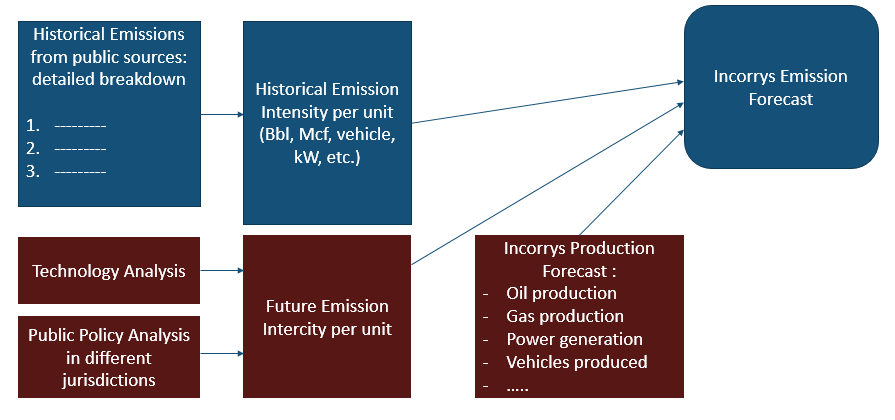Your cart is currently empty!
May 1, 2024
Forecast of Emissions from US Petroleum Systems by GHG 2005-2030

May 1, 2024
Forecast of Emissions from US Petroleum Systems by GHG 2005-2030
GHG emissions, by greenhouse gas, from US petroleum systems is led by CO2 and CH4. Emissions of other gases is negligible. In recent years, industry has focused on reducing methane emissions from various fugitive leaks, venting from pneumatic devices, facilities, compressors, and well completions. CO2 and CH4 emissions are also the result of flaring, produced water, drilling mud degassing, chemical injection pump and other equipment used in the normal operations. By 2030, emissions from oil production will increase to 80 Mt CO2eq from about 70 Mt CO2eq today due to increased production primarily from the Permian basin however, Incorrys expects it to begin a downward trend post 2030 dropping to about 50 Mt CO2eq by 2040.
Incorrys Methodology to Forecast Emissions

See also:
US Historical GHG Emissions by Type 1990-2022
US Historical CO2 Emissions by Sector 1990-2022
US GHG Emission Intensity for Natural Gas Systems 2017-2030
US GHG Emissions from Natural Gas Systems 1990-2030
Forecast of Emissions from US Petroleum Systems 1990-2030
Forecast of US Emissions from Natural Gas Flaring 2005-2030
References:
EPA. 2023. Inventory of U.S. Greenhouse Gas Emissions and Sinks: 1990-2021. U.S. Environmental Protection Agency, EPA 430-R-23-002. Available at
https://www.epa.gov/ghgemissions/inventory-us-greenhouse-gas-emissions-and-sinks-1990-2021
IEA. Oil 2023. Executive summary. Available at https://www.iea.org/reports/oil-2023/executive-summary.
IEA. Crude Oil Production. August, 31, 2023. available at https://www.eia.gov/dnav/pet/pet_crd_crpdn_adc_mbblpd_a.htm.
EIA. May, 24, 2022. Permian Basin Oil and Gas Output is Thought to Beat Record in June. Available at https://rextag.com/blog/EIA-Permian-Basin-Oil-and-Gas-Output-is-Thought-to-Beat-Record-in-June.